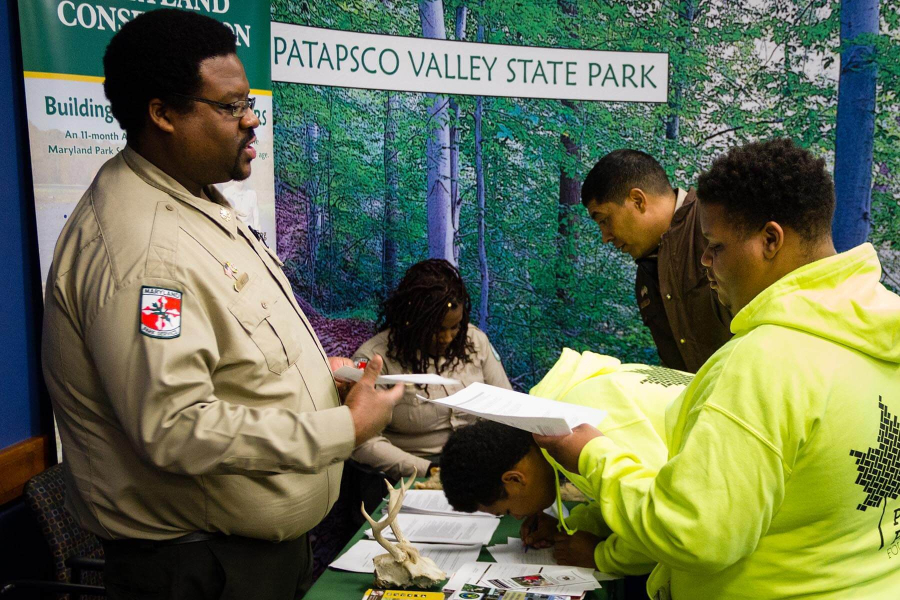Attracting a diverse workforce continues to be a priority for the Chesapeake Bay Program
Results of second diversity survey show progress toward meeting Watershed Agreement outcome

In 2016, the Chesapeake Bay Program distributed its first-ever diversity survey to those who work for or with the partnership. Last year, a follow-up was distributed by the Alliance for the Chesapeake Bay for the Chesapeake Bay Program’s Diversity Workgroup. The Workgroup is a team of diverse voices from around the watershed committed to meeting the Diversity Outcome in the Chesapeake Bay Watershed Agreement by engaging underrepresented populations in conservation and restoration efforts, promoting environmental justice and seeking to create and expand employment opportunities for underserved individuals and communities. Over the past two years, the workgroup has attended career fairs, mostly at minority serving institutions, and established key partnerships with Bowie State University and Virginia State University.
The 2019 diversity survey indicated a 6.5% increase in the percentage of respondents who self-identified as people of color and a 12.8% increase in the percentage of respondents who self-identified as people of color in leadership positions.
This marks progress towards the partnership’s targets of increasing the number and diversity of people who support and carry out conservation and restoration work:
- Increase the percentage of people of color in the Chesapeake Bay Program to 25% by 2025. (Respondents who self-identified as people of color: 13.7% in 2016 to 14.6% in 2019)
- Increase the percentage of people of color in Chesapeake Bay Program leadership positions to 15% by 2025. (Respondents who self-identified as people of color in leadership positions: 9.1% in 2016 to 10.3% in 2019)
While both the 2016 and 2019 surveys were distributed to approximately 750 people who work for or with the partnership, the latest survey had a lower response rate of 38% compared to 50% in 2016, potentially impacting the results. The Chesapeake Bay Program plans to distribute the diversity survey again in 2021, 2023 and 2025. Prior to these future assessments, the process will be evaluated to improve response rates.
Including all types of voices and communities in environmental protection and restoration efforts is critically important to the success of the Chesapeake Bay Program in an increasingly diverse watershed. The inclusion of all voices and communities increase the amount of new perspectives and ideas that support restoration, while also ensuring all people throughout the watershed can share in the vibrancy of the region.
While age, gender, sexual orientation, religious faith, income level and other characteristics are important aspects of diversity, the Chesapeake Bay Program has decided to focus first on expanding ethnic diversity among the partnership.
To learn more about the Chesapeake Bay Program’s work to increase Diversity, visit ChesapeakeProgress, the Chesapeake Bay Program’s website for accurate and accessible data that tracks our progress toward the goals and outcomes of the Chesapeake Bay Watershed Agreement.

Comments
There are no comments.
Thank you!
Your comment has been received. Before it can be published, the comment will be reviewed by our team to ensure it adheres with our rules of engagement.
Back to recent stories